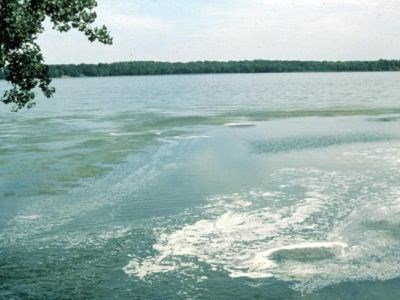Residents living around Long Lake are still advised to not use their water due to a blue-green algae bloom discovered on the lake June 30.
Stephen Butcher, who lives on the lake, is the chair of the Long Lake Stewardship Committee and a member of the Greater Sudbury Watershed Alliance. He said this isn't the first time residents around the lake have had to deal with a blue-green algae bloom. The first was in 2008.
“It's not going to be resolved until we take steps to correct this,” he said. “It's the phosphate that triggers (blue-green algae).”
Back in April, Butcher and other members of the watershed alliance presented a proposed bylaw to the Greater Sudbury policy committee, requesting the city consider a ban on fertilizer containing phosphorus.
“Council voted unanimously back in April for a phosphate ban on fertilizer (and) asked staff to draw up the bylaw,” he said.
Stephen Monet, manager of environmental planning initiatives with the city, said the report is finished. According to the city's website, it will be presented during the July 13 city council meeting.
City council will be able to choose from three options: implement a bylaw that would restrict the use of fertilizer with phosphorus, start a “lake friendly” household products campaign or remain status quo.
The report recommends that city council implement the bylaw and have city staff “retain outside legal advice to further investigate the jurisdictional issues and content of such a bylaw.”
However, Monet said banning fertilizer with phosphorus may not completely solve the problem.
“One of my concerns is that they're raising expectations by passing a bylaw that blue-green algae is going to go away,” he said. “That's really not the case.”
Monet said only about five per cent of the lawn fertilizer sold for general use in the city contains phosphorus.
“It's certainly a part of the puzzle, but a very small part,” he said. “A lot of phosphorus has already entered the lakes through legacy issues.”
Monet said when the “initial fumigations from the mining companies removed vegetation from the area, the soil eroded and ... had nowhere to go but into the lakes.”
“That would have increased the phosphorus of the lakes that would have been contained within the impacted zone,” he said.
Monet added that though phosphorus contributes to blue-green algae, it may not be the main factor for the blooms. He said the phosphorus levels in Long Lake “ironically are not very high.”
“Last year we measured a phosphorus level in the spring of seven (and) generally, you start to see problems ... from an algae standpoint around 20,” he said.
“In fact, blue-green algae has been found the past three years as well in Windy Lake, which is one of the lowest phosphorus levels out of any lakes in the municipality. It has a phosphorus level between three and four.”
But those numbers are cold comfort to residents who have been advised by the Sudbury and District Health Unit to find an “alternate source of water for cooking and consumption.”
“If the bloom is present, then (residents are) not to use the water for anything,” Allan McDougall, environmental support officer with the Sudbury and District Health Unit, said. “Don't swim in it, don't let your pets swim in it, don't shower in it or anything.”
McDougall said a confirmed report of the bloom at this time is considered “early” compared to previous years and encourages residents to be “vigilant and check their waterfront” for blue-green algae.
“The season usually runs from mid-July to the end of October,” he said. “This was a very small one, but it's early in the season. So once it's there, it usually reoccurs.”
McDougall said one would have to ingest a “fair amount” of affected water to get sick, but said drinking or using water with blue-green algae could affect someone's kidneys, central nervous system or cause irritation to the skin.
Monet said getting rid of blue-green algae is a long-term problem that can be controlled by “better sediment control when a development goes in.” He also said if residents do apply fertilizer, they should make sure there are no heavy rains in the forecast for the next 48 hours to help the fertilizer dissolve into the soil. Creating a “buffer strip between the water and managed or manicured lawn area,” also helps Monet said.
For now, Butcher can still drink water at his home, as he has a water filtration system and has for the past 10 years.
He said the systems costs between $3,500 and $5,000 and the expense isn't something people on the lake, who are now being told to find an alternate permanent source of water, likely won't want to be burdened with.
“The vast majority of people on this lake — the 1,200 homes — are using lake water,” he said. “It would be millions of dollars.”
Join Sudbury.com+
- Messages
- Post a Listing
- Your Listings
- Your Profile
- Your Subscriptions
- Your Likes
- Your Business
- Support Local News
- Payment History
Sudbury.com+ members
Already a +member?
Not a +member?
Sign up for a Sudbury.com+ account for instant access to upcoming contests, local offers, auctions and so much more.
